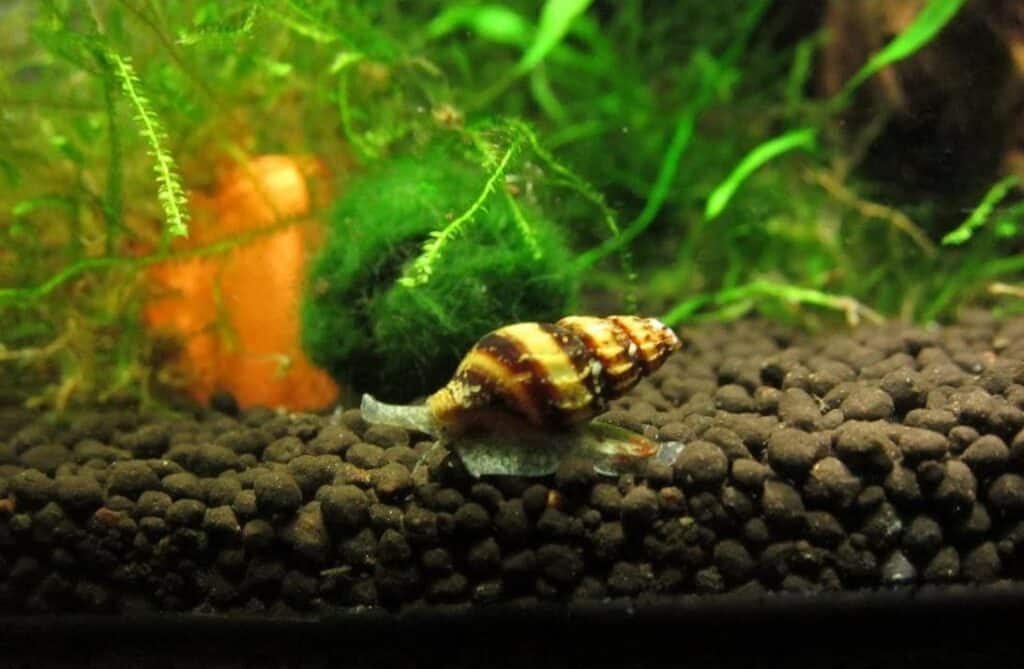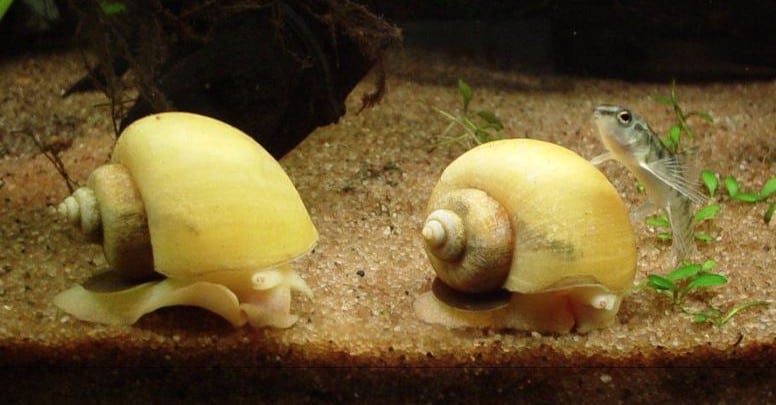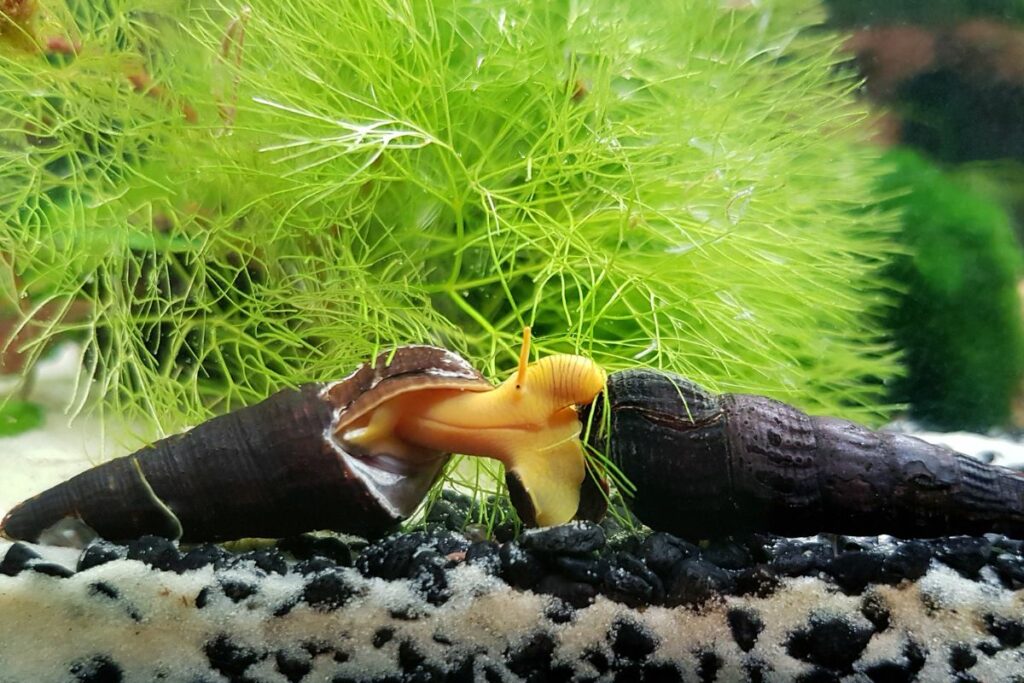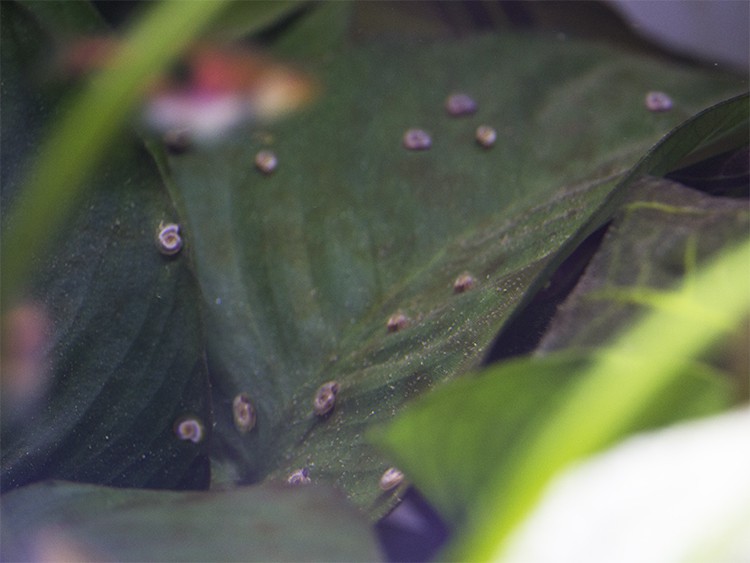In this article Show
If you’ve ever marveled at the gentle glide of a snail across your aquarium glass or pondered the world of these small creatures as they maneuver around your tank, you’re in the right place.
Snails are not only fascinating to watch but can be a wonderful addition to your aquatic family when cared for correctly.
Having spent many years navigating the ins and outs of home aquariums, I’ve encountered my fair share of snail varieties, each with its unique charm and care requirements.
The thing about snails is, that while they might seem low-maintenance—and indeed, they are less demanding than many aquatic pets—they still have specific needs that are essential for their well-being.
But don’t worry! This guide is designed to simplify snail care for you. Whether you’re a novice curious about starting your journey with snails or a seasoned aquarium owner looking to brush up on snail knowledge, I’ve got you covered. We’ll delve into everything from tank setup and diet to their intriguing lifespan and more.

Different Types of Snails
For many, the term “snail” conjures a singular image: a slow-moving creature with a spiraled shell. However, in the vast world of snails, there’s incredible diversity in size, habitat, and behavior.
Whether you’re interested in water-dwelling varieties or those that prefer life on land, there’s likely a snail just right for your home environment. Let’s explore some of the most popular pet snails:
1. Freshwater Snails
- Mystery Snails: These are one of the most commonly kept freshwater snails. They come in various colors, including gold, blue, and ivory, and can grow up to 2 inches in diameter.
- Nerite Snails: Renowned for their appetite for algae, they’re a great natural way to keep tanks clean. Their shells are often adorned with unique patterns and colors.
- Apple Snails: These are some of the largest freshwater snails, with some species growing up to the size of a tennis ball.
- Ramshorn Snails: Named for their spiral-shaped shells, these snails are often seen in a range of colors, from red to brown.
2. Saltwater Snails
- Turbo Snails: Known for their round, spiraled shells, these snails are excellent algae eaters and are commonly found in marine aquariums.
- Cerith Snails: With their slender, elongated shells, they burrow in the substrate and help aerate it while consuming detritus and algae.
- Nassarius Snails: These snails have a keen sense of smell and are often seen emerging from the substrate to consume detritus.
Tank Setup
Setting up a snail tank can be an exciting venture, but ensuring it’s optimized for your snail’s needs is crucial.
Whether you’re introducing them into an established aquarium or creating a dedicated snail environment, a few essential components are universal for their wellbeing. Here’s a detailed guide to ensure your snails have a comfortable, safe, and stimulating home:
1. Choosing the Right Tank Size
As a general rule, for freshwater aquarium snails, a tank of at least 5 gallons is a good start, but larger is always better. It provides them ample space to roam, explore, and access food.
Avoid overcrowding your tank, as it can lead to reduced oxygen levels, poor water quality, and stress for the inhabitants.
2. Substrate Selection
Soft, sandy substrate is ideal, especially for burrowing species like Cerith and Nassarius snails. This type of substrate is gentle on their soft underbellies and allows them to exhibit natural behaviors. A 2-3 inch layer is recommended, deeper if you have burrowing species. This also provides an environment for beneficial bacteria to thrive.
3. Temperature & Humidity
Aquatic Temperature: Freshwater aquarium snails generally thrive in temperatures ranging from 70°F to 78°F. A reliable aquarium heater and thermometer are essential to maintain consistent temperatures.
4. Filtration & Water Quality
Good water quality is vital for the health of aquatic snails. Filtration helps remove waste products, improve oxygenation, and promote the growth of beneficial bacteria.
Sponge filters are an excellent choice for snail tanks, as they are gentle and won’t pose a risk of sucking up tiny snails. If using other filter types, ensure the intake is covered with a sponge or guard.
Regular water changes (typically 25% every week or two, depending on tank size and load) help keep the environment clean. Always dechlorinate tap water before adding it to the tank.
5. Tank Decor & Plants
Snails appreciate hiding spots. Consider adding caves, driftwood, or other decorations. Ensure there are no sharp edges that might damage their soft bodies.
Many snails enjoy having live plants in their environment, both as a food source and for exploration. However, be sure to choose plants that can coexist with snails without being entirely eaten!
6. Tank Mates
If you’re introducing snails into a community tank, ensure other inhabitants are snail-friendly. Some fish species might see snails as a snack or might be aggressive.

Diet & Feeding
When it comes to the dietary needs of snails, they’re often much more than the simple algae grazers they’re commonly perceived to be.
Whether aquatic or terrestrial, snails require a balanced diet to ensure they receive all the necessary nutrients for growth, shell health, and overall vitality. Here’s a comprehensive guide to feeding your pet snails:
1. Basic Dietary Needs
- Algae & Biofilm: For many aquatic snails, naturally occurring algae and biofilm in the tank serve as their primary food source. This diet helps in keeping the tank clean as they graze on the algae growing on surfaces.
- Snail Pellets: Commercially available snail pellets or tabs are a good option. They’re specially formulated to provide all the essential nutrients for snails.
2. Supplemental Foods
Both aquatic and terrestrial snails enjoy a variety of blanched vegetables. Favorites include zucchini, cucumber, lettuce, spinach, and carrots. Always remove uneaten portions after 24 hours to prevent water contamination.
To promote strong shell growth, snails require calcium. Cuttlefish bones, eggshells, or specialized calcium supplements can be provided. For aquatic snails, dissolving a calcium pill or adding crushed coral to the substrate can help maintain calcium levels in the water.
2. Feeding Frequency
If relying on naturally occurring algae, there’s no need for daily feeding. If supplementing with pellets or vegetables, 2-3 times a week is generally sufficient.
3. Overfeeding & Monitoring
Be cautious about overfeeding, as it can lead to poor water quality in aquatic setups and obesity in land snails. Uneaten food can decay, leading to ammonia spikes in tanks.
Monitor your snails’ appetite and adjust the feeding amount and frequency accordingly. Active, well-fed snails will exhibit healthy growth and active behavior.
4. Special Considerations for Breeding Snails
If breeding, it’s crucial to provide extra nutrients, especially protein, to ensure healthy egg production. This can be achieved with protein-rich pellets or supplemental foods like boiled fish or shrimp for land snails.

Lifespan & Health
Understanding the typical lifespan of your pet snails and recognizing the signs of good health, as well as potential health issues, is crucial for responsible snail care. While these creatures might seem robust, they have unique vulnerabilities and needs. Here’s a guide to help you navigate the world of snail health:
Average Lifespan
The lifespan can vary based on species, diet, and tank conditions. Generally, freshwater snails like Mystery snails can live 1-3 years, while some saltwater species might live slightly longer.
2. Signs of a Healthy Snail
- Activity Level: Healthy snails are typically active, especially during their regular active periods, which might be nighttime for some species.
- Shell Appearance: The shell should be free from cracks, have a consistent color without any signs of erosion, and exhibit regular growth.
- Eating Habits: Regular feeding and a healthy appetite are usually good indicators of a snail’s wellbeing.
Common Health Issues & Solutions
- Cracks or Breaks: Minor damage might heal over time, but ensure the snail’s environment is free from aggressive tank mates or sharp objects.
- Shell Erosion: Usually a sign of calcium deficiency. Provide more calcium in the diet.
- Inactivity or Retraction: While snails might occasionally retreat into their shells for short periods, prolonged inactivity can indicate stress, poor water quality, or illness. Check the tank conditions and parameters.
- Overpopulation: In ideal conditions, some snail species can reproduce rapidly, leading to overpopulation, which can strain the tank’s resources. Consider separating genders or introducing natural predators.
- Parasitic Infections: Some snails, especially wild-caught ones, might harbor parasites. If you suspect a parasitic infection, consult a veterinarian familiar with aquatic or terrestrial invertebrates.
Preventive Care
- Quarantine New Arrivals: Always quarantine new snails for a few weeks before introducing them to an established tank to monitor for potential health issues and prevent the spread of diseases.
- Regular Monitoring: Check your snails daily and observe their behavior. Early detection of any changes or issues can make addressing potential health problems more manageable.
- Maintain Water Quality: For aquatic snails, regularly test the water for ammonia, nitrites, nitrates, and pH levels. Ensure the tank undergoes routine water changes.
Breeding & Reproduction
The fascinating world of snail reproduction is one that’s marked by both simplicity and complexity. Breeding snails, whether intentional or accidental, can be an enriching experience for aquarium enthusiasts. Here’s a closer look at the process, conditions, and insights:

1. Understanding Snail Reproduction
Most snail species are hermaphroditic, meaning they possess both male and female reproductive organs.
This allows two snails to exchange sperm packets and both lay eggs, maximizing reproductive potential. However, some species still require a mate, while others can self-fertilize.
After mating, snails lay eggs, the number and appearance of which can vary widely among species. For example, apple snails lay colorful egg clutches above the waterline, while many land snails bury their eggs in moist soil.
2. Breeding Conditions & Process
For successful breeding, provide an environment that mimics the natural habitat of the snails. This includes optimal temperature, pH level, and a calcium-rich diet for healthy shell growth and egg development.
When snails are ready to mate, you may notice them following each other around or engaging in what looks like a “dance.” This behavior can last for hours before the actual transfer of sperm occurs.
3. Egg Care
Depending on the species, the eggs might need to be transferred to a separate breeding tank to protect them from potential predators. Ensure the water conditions in this tank are stable.
Eggs can hatch anywhere from a few days to several weeks, depending on species and conditions. Once hatched, baby snails, often called “snaillets,” will begin feeding almost immediately.
4. Post-Hatching Care
Snaillets typically feed on the same diet as adult snails but may require smaller food particles. Consider finely crushed snail pellets, algae, or blanched vegetables.
It may be beneficial to keep the young snails separate from larger tank mates until they’ve grown a bit to reduce the risk of predation.
Baby snails require plenty of calcium for healthy shell growth. Ensure their diet is calcium-rich and consider adding a calcium supplement.
5. Managing Overpopulation
Snails can reproduce rapidly under the right conditions, which can lead to overpopulation in a tank. To manage this you should separate the snails by gender if identifiable.
You can also introduce natural predators, like certain species of fish, to control the snail population or consider giving away or trading young snails with other hobbyists or local pet stores.
Conclusion
Breeding snails is a captivating journey, revealing the intricate lifecycle of these creatures. While it’s a rewarding experience, it’s crucial to approach it responsibly, ensuring that all snails, young and old, receive the care and attention they deserve.






